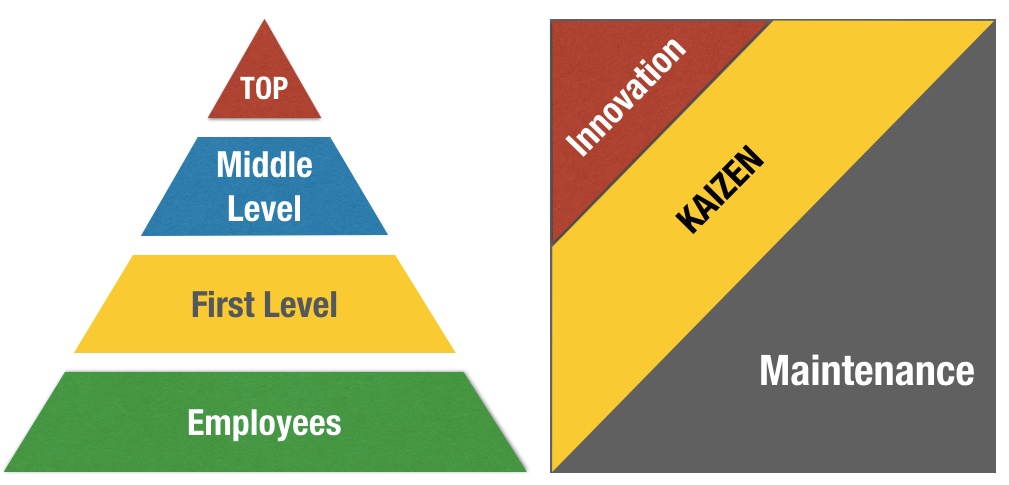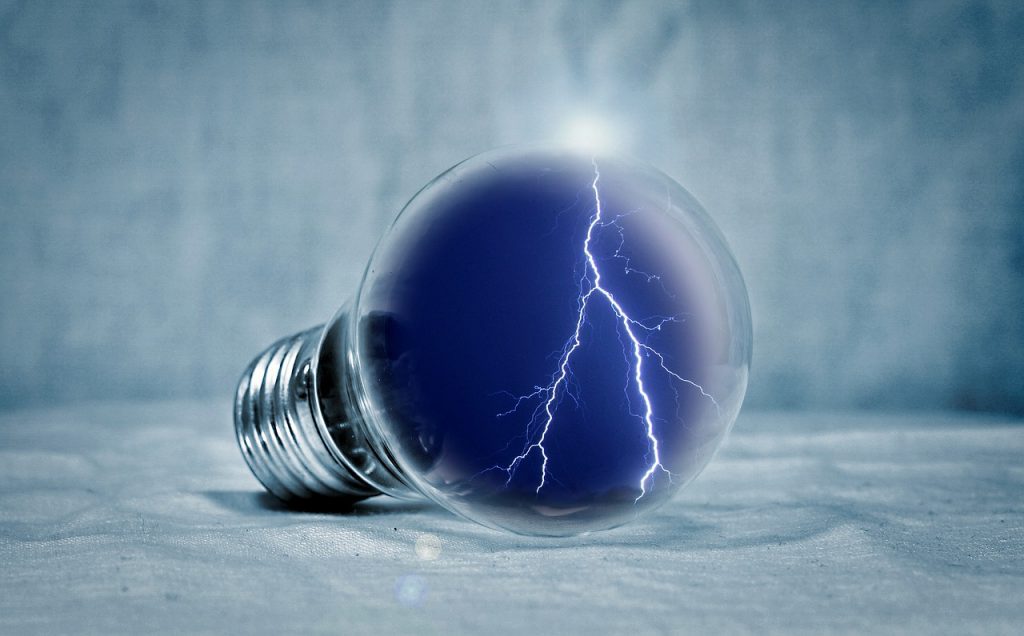While Kaizen and innovation both bring improvements in the company’s products and/or services, processes, and business models, they have big differences, especially in the way they are implemented and the results they are bringing to the company.
As a small business owner, you will always work on different types of improvements in your company. It doesn’t matter if you want to improve your products and services, or process. If you want to stay ahead of your competitors you will always work on improvements. Because of that, it is important to know about the difference between Kaizen and innovation.
But, you have two important roles. The first one is to maintain your current successful operations. In such a way you will be sure that you are on the right way for your small business. The second role that you will have as an entrepreneur or manager is to improve some of the main systems within your organization.
You can use more than 100 improvement ideas to start working on your business improvements today.
What is Kaizen?
Masaaki Imai, the author of the Kaizen concept, differentiates two major management components: maintenance and improvement.
Maintenance requires activities such as maintaining the company’s current operations to technological, managerial, and operational standards. On the other hand, improvement can be broken down into Kaizen and innovation. It is logical because both concepts will lead to different improvements. Innovation is something totally new, while improvement is something existing that will give better results.

Here is an explanation of the definition of Kaizen from Masaaki Imai, the founder of the Kaizen Institute.
What is the difference between Kaizen and innovation?
Here are some of the biggest differences between these two concepts:
1. Small improvements VS Dramatic improvements
Kaizen is a Japanese word that means “change for the better” and is often used to describe a series of continuous improvements made by an organization to improve its performance. It is a concept based on the philosophy of continuous improvement.
Kaizen is focused on small improvements due to the ongoing efforts of the company’s staff members. The Kaizen approach takes small incremental steps to improve business processes and eliminate waste.
The Kaizen approach has been used in many industries, including manufacturing, healthcare, and education. It is an important part of the Toyota Production System (TPS), covering a set of methods, tools, and practices that help a company increase efficiency and effectiveness. The TPS is based on the concept that “a company should be able to reduce its time and cost to manufacture products while improving their quality simultaneously.”
On the other hand, innovation is focused on large, dramatic improvements due to big changes in technology and equipment.
Innovation is what happens when a company creates an idea that has never been done before, such as a new process, product, or service. It can also be called an “out-of-the-box” approach.
2. Small steps in KAIZEN VS Big steps in Innovation
As an improvement concept, Kaizen is implemented through small steps that will improve the current work of any part of the company. It will not require complex tools, but sometimes simple observations to discover simple problems that will need a solution as an improvement effort.
It is an approach based on the idea that everything can be improved by observing, learning from, and then changing the processes and procedures in the workplace. The main objectives are an improvement in quality, an increase in productivity, and a reduction of costs.
For example, you can observe how the operator’s work is done, and you can discover that if you change something, it will decrease the time that the operator will need to spend to do the work. This is part of the KAIZEN concept.
On the other side, innovation is not something that you can implement in one day with several simple steps. Innovation will require projects that sometimes will last several months to several years.
✋ Warning
If you want to work on your innovation projects, read how Evernote can help you. Additionally, we have already used Evernote as an improvement tool in many small businesses.
3. Continuous improvements VS Periodic improvements
Because of the possibilities for implementing small steps toward improvements, Kaizen is a continuous, never-ending approach.
For example, in a large retail store, managers might implement a series of small changes that will lead to an improvement in customer service and/or productivity. Small, continuous changes are made at many levels in the organization, from the front line to the top. They can be made throughout the entire process of making products and delivering them to customers.
This approach encourages employees to take risks and try new things—even if they don’t know how to do it right. It also allows them to make mistakes and learn from those mistakes. As a result, employees become more creative, innovative, and productive than ever before.
On the other side, innovation is periodic, something that you will implement from time to time.
4. Incremental improvements VS non-incremental improvements
Another difference between KAIZEN and Innovation as concepts is the results they bring to the company. Kaizen, on the one side, focuses on small improvements with small incremental results. For example, Kaizen improves delivery time which can be four days instead of 5 days before process improvement. It does not change the overall process.
Innovation is focused on big improvements with a large impact on the business. It can involve major changes to the processes. The focus of innovation is to bring non-incremental, radical results. For example, to find a solution for delivery time to be executed in 1 to 2 days instead of 5 days. For the same example of delivery time, innovation will rebuild all processes included in delivery to reduce delivery time to only one day.
5. Little or no investments in KAIZEN VS large investments in Innovation
Kaizen, in many cases, will not require big investments in new technology and processes. It will use current resources to improve them. For example, the Kaizen concept will require improvements in the current technologies and processes.
The most common of these improvements is to make existing processes more efficient without large investments. The idea is that if you have a problem in your business, you can change it by changing something in the way it is done.
Contrary, innovation will require larger investments in time, money, and effort. It will remove current processes, build new ones, or invest in new technology.
6. Improvements VS Rebuilding
You can always improve something, but sometimes the best thing you can do is rebuild what you already have. However, while the term improvement might imply some small improvements over previous years, rebuilding is far more drastic.
This difference is closely related to the previous one. Kaizen focuses on improving current things in the company as products and services, processes, technology, and business models. On the other side, innovation will turn away these things and rebuild totally new, nonexistent things until now.
Rebuilding is the process of creating a completely new version of something or rethinking the way it operates.
📖 More similar articles
7. Higher efforts VS little efforts
Maintaining continuous improvements in the company will require greater efforts than implementing periodic innovation projects. This is another difference between Kaizen and innovation.
The philosophy behind kaizen is to work on the small things that make up the big picture over a longer period of time rather than focus on a single, huge change. This can be done by focusing on the smallest achievable change that will still improve the system. Kaizen is a continuous improvement process. It requires continuous little effort from every team member, every individual.
Innovation is an isolated event that requires a lot of time, effort, resources, and money to implement. It is not a continuous process that will be implemented by everyone.
Related: The Team Effectiveness and Different Roles in Teams That Win
Conclusion
As you can see, both concepts are important for your small business. The KAIZEN is something that you can make on an everyday basis. In such a way your company will be better each day. You will decrease costs, increase productivity, profitability, etc.
But still, after some period of time, you will need to implement innovation processes to bring high-rate improvement in your business operations. For example, you will need to innovate new processes, buy new modernized equipment, bring new products onto the market, etc.
So, combining the KAIZEN concept with innovation will be important for your success as an entrepreneur and your business overall.





